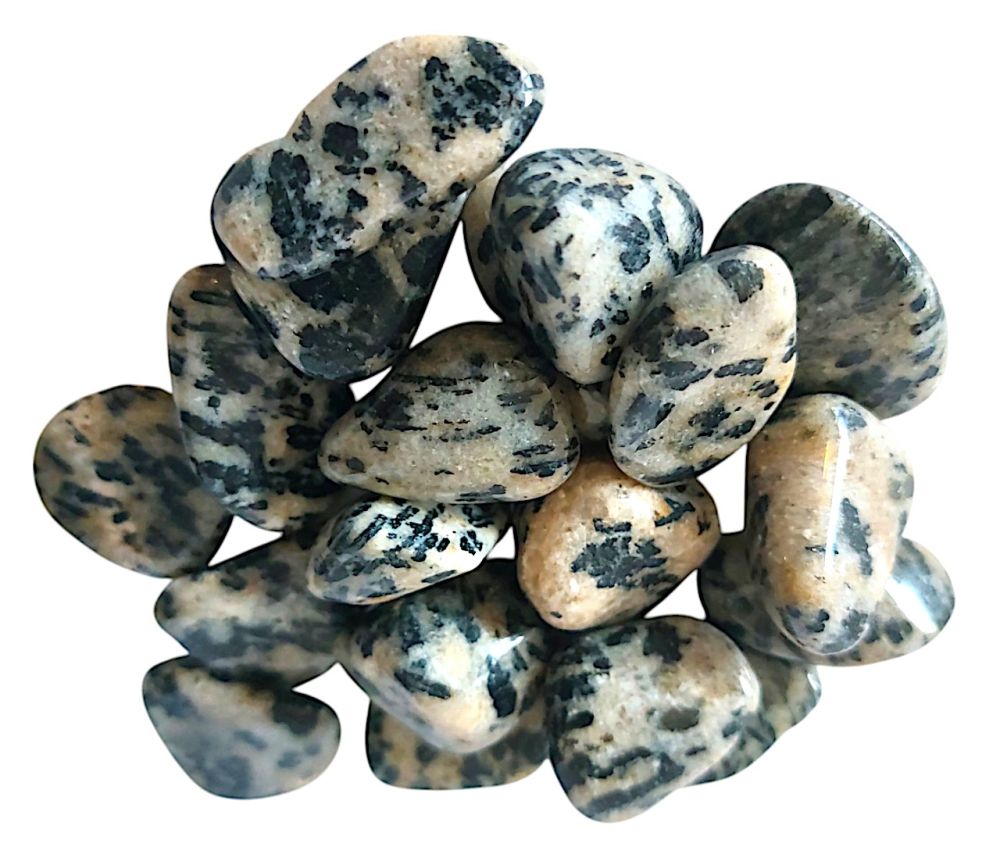We use cookies to make your experience better.
TimmersGems has a new website, existing customers also need to register again.
New tumbled stones in 2025, Indonesian fowl (guinea fowl) quartz.
Also in 2025 we have a beautiful collection of tumbled stones, of great quality and really beautiful in colour.
Availability:
In stock
SKU
122171
Quartz is a form of silicon dioxide, SiO₂, and is one of the most common minerals in the earth's crust. It represents more than 12% of the volume of the earth's crust (including granite and sand). Quartz has two modifications: α-quartz is trigonal, and β-quartz (a higher-temperature form) is hexagonal. In addition, silicon dioxide occurs in many other structures, such as α- and β-cristobalite, keatite, tridymite, coesite, stishovite, melangophlogite, and lechatelierite. Although quartz consists of silicon dioxide, it is often considered a tectosilicate. This is because quartz forms a network of SiO₄ tetrahedra. Two silicon atoms share each oxygen atom in this network. Individual SiO₂ molecules only occur in gaseous silicon dioxide. Quartz can be very pure, as in rock crystal, but often contains impurities. Ions that integrate into the crystal lattice during crystal growth can comprise these impurities. Quartz crystals can contain between 13 and 15,000 ppm Al³⁺, between 9 and 1,400 ppm Na⁺, between 3 and 300 ppm K⁺ and traces of Fe³⁺, Ti⁴⁺, P⁵⁺, H⁺ and Li⁺. Aluminium and iron, in combination with ionising radiation, are responsible for the colours of a number of quartz varieties. Furthermore, quartz crystals can grow over other minerals, as is the case with rutile quartz. Quartz can form both large crystals and microscopic aggregates. The largest quartz crystals occur in Farm Verloren in Namibia. Quartz crystals up to 20 metres and possibly 50 metres, and dolomite crystals up to 2 metres, occur here. Rapid cooling often transforms melted quartz into glass due to its lengthy crystallisation process. Quartz is a piezoelectric material, and the vibrations that can be induced in the crystal lattice are used in electronic equipment such as quartz clocks and radios.
| Dimensions | Divers |
|---|---|
| Country of Manufacture | Indonesia |












